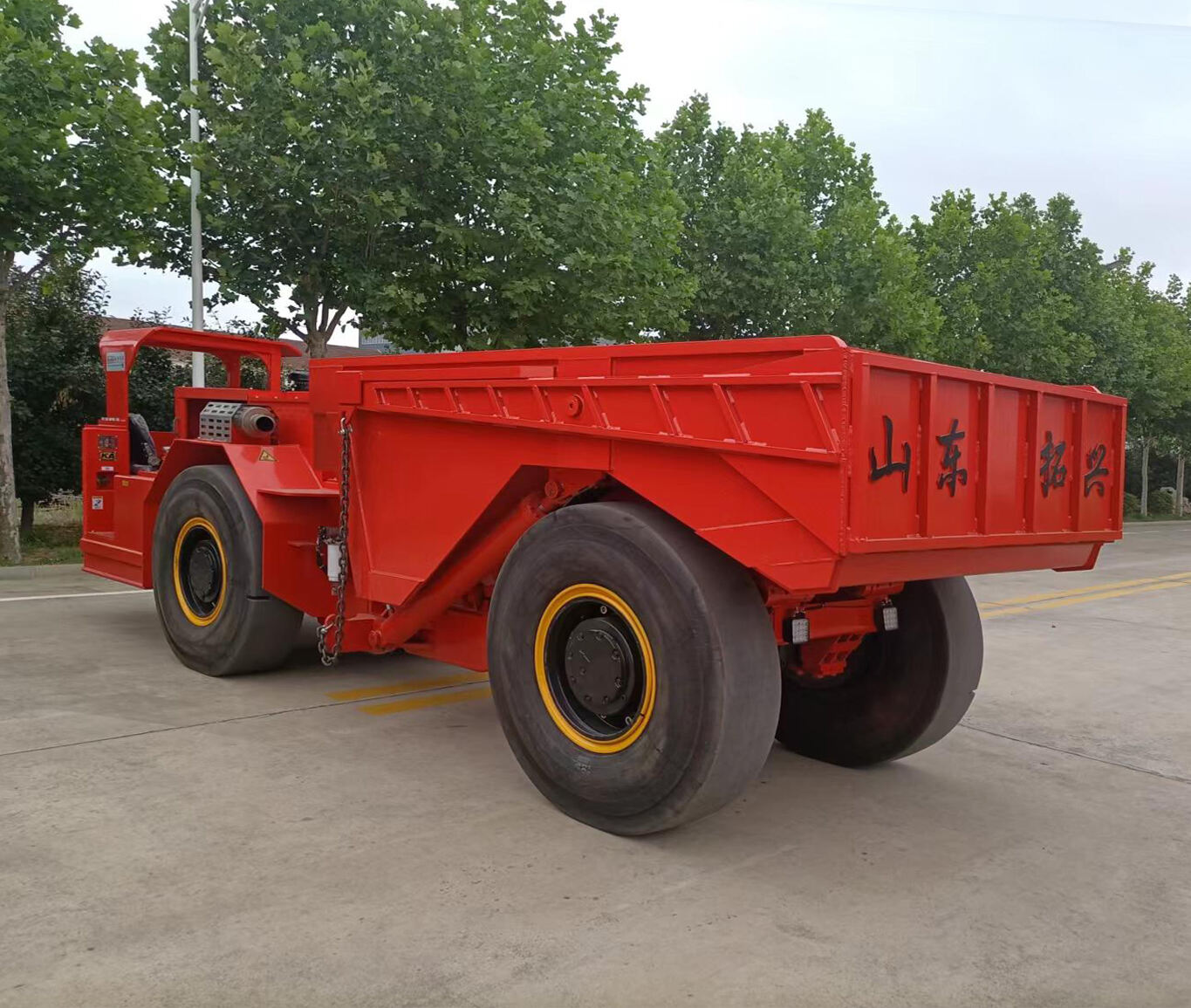Revolutionizing Mineral Extraction: The Strategic Advantages of Underground Trucks
Modern mining operations increasingly rely on specialized underground trucks to navigate the challenging conditions beneath the earth's surface while maintaining productivity. These robust haulage solutions combine advanced engineering with operator safety features to transport materials efficiently through confined underground spaces. Unlike traditional ore transport methods, underground trucks offer unparalleled flexibility in various mining configurations from narrow vein operations to large-scale block caving systems. Their ability to operate in low-profile environments while carrying substantial payloads transforms the economics of underground mineral extraction. From diesel-powered to battery-electric models, these purpose-built vehicles address the unique constraints of subsurface mining while delivering measurable improvements in operational efficiency and worker safety.
Enhanced Productivity in Constrained Environments
High-Capacity Payload Handling
Underground trucks excel at moving substantial material volumes through tight spaces that would challenge conventional haulage systems. Modern units carry payloads ranging from 20 to 60 metric tons, with low-profile designs that negotiate tunnels as narrow as 4 meters wide. Articulated steering mechanisms allow these underground trucks to navigate sharp turns in drifts and ramps without sacrificing load capacity. Advanced suspension systems maintain stability when hauling dense ores at full capacity on uneven underground roadways. Some models feature automated load-sensing technology that optimizes power distribution based on payload weight, improving cycle times on steep underground grades. The combination of substantial capacity and compact dimensions makes underground trucks indispensable for operations seeking to maximize production from limited underground workings.
Continuous Operation Capabilities
Durably constructed underground trucks minimize downtime through components engineered for extended service in harsh conditions. Sealed electrical systems protect critical components from moisture and dust infiltration prevalent in mining environments. Heavy-duty braking systems rated for thousands of hours of downhill haulage prevent performance degradation during repetitive cycles. Many underground trucks now incorporate predictive maintenance systems that monitor component wear in real-time, allowing repairs to be scheduled during planned maintenance windows rather than causing unscheduled stoppages. The availability of quick-change battery systems in electric underground trucks enables continuous operation through battery swaps rather than lengthy charging delays. These reliability features ensure underground trucks maintain high utilization rates that directly translate to increased ore throughput for mining operations.

Safety and Environmental Improvements
Operator Protection Systems
Underground trucks prioritize worker safety through integrated designs that address unique subsurface hazards. Reinforced roll-over protection structures (ROPS) and falling object protection (FOPS) meet stringent underground safety standards for overhead and side impact protection. Advanced proximity detection systems alert operators to personnel or obstacles in blind spots around the vehicle. Climate-controlled cabins with pressurized air filtration protect drivers from dust and exhaust fumes, while ergonomic controls reduce operator fatigue during extended shifts. Some newer underground truck models incorporate collision avoidance technology that automatically applies brakes when detecting imminent impacts. These safety systems collectively reduce accident rates in underground environments where visibility and maneuvering space are inherently limited compared to surface operations.
Reduced Emissions and Ventilation Requirements
The latest generation of underground trucks significantly decreases the environmental footprint of underground mining operations. Battery-electric models eliminate diesel particulate emissions entirely, reducing underground ventilation costs by up to 50% compared to traditional diesel-powered units. Regenerative braking systems capture energy during downhill hauls, extending operating range while minimizing heat generation in underground workings. Even modern diesel underground trucks employ tier-4 final engines with advanced aftertreatment systems that dramatically lower harmful emissions. Reduced exhaust heat output from efficient underground trucks allows mines to operate at greater depths without prohibitive cooling system investments. These environmental benefits make underground trucks increasingly attractive for operations facing stringent air quality regulations or seeking to improve their sustainability profile.
Cost Efficiency and Operational Flexibility
Lower Haulage Costs Per Ton
Underground trucks deliver superior economics by reducing material transport expenses across multiple dimensions. Their ability to navigate steep grades (up to 20% in some models) allows mines to construct more direct haulage routes with shorter ramp systems. Fewer underground trucks can replace numerous smaller load-haul-dump (LHD) units while moving equivalent tonnage, reducing fleet maintenance complexity. Advanced energy recovery systems in modern underground trucks lower power consumption per ton-mile compared to traditional haulage methods. The high resale value of quality underground trucks spreads capital costs over multiple mine projects, further improving lifecycle cost calculations. These economic advantages make underground trucks particularly valuable in medium-depth deposits where they can often replace more expensive shaft-hoisting systems for ore transport.
Adaptability to Various Mining Methods
The versatility of underground trucks allows deployment across diverse underground mining techniques with minimal reconfiguration. In room-and-pillar operations, they efficiently transport ore to central collection points while negotiating the irregular layouts characteristic of this method. For sublevel caving mines, underground trucks handle the continuous flow of fragmented material from production zones to ore passes. Some operations utilize underground trucks in hybrid systems where they shuttle between LHD units and fixed infrastructure like crushers or skip-loading stations. This adaptability makes underground trucks ideal for mines that anticipate method changes over their operational lifespan or those working multiple ore bodies with different geometries. The standardized interfaces on modern underground trucks also simplify integration with automated guidance systems as operations transition toward more mechanized approaches.
Technological Advancements
Automation and Remote Operation Capabilities
Leading-edge underground trucks now incorporate technologies that pave the way for unmanned operation in hazardous areas. Semi-autonomous control systems can manage speed, braking, and route navigation while operators supervise multiple units from a surface control room. Underground trucks equipped with LiDAR and radar systems create real-time 3D maps of underground workings, allowing precise positioning within centimeters. Some mines already use remotely operated underground trucks for development work in unsupported areas or during blasting ventilation periods. These automation features not only improve safety by removing personnel from high-risk zones but also enable continuous production during shift changes or breaks. The data collected by smart underground trucks also helps optimize haulage routes and identify maintenance needs before they cause downtime.
Advanced Material and Design Innovations
Manufacturers continue to push the boundaries of underground truck performance through cutting-edge engineering solutions. High-strength, lightweight alloys in chassis construction increase payload capacity without expanding vehicle dimensions. Modular electrical systems allow quick component replacement in the field, minimizing repair downtime. Some experimental underground truck designs incorporate hydrogen fuel cell technology for zero-emission operation with faster refueling than battery-electric models. Tire monitoring systems track pressure and temperature in real-time to prevent premature wear on expensive underground truck tires. These innovations collectively enhance the reliability, efficiency, and longevity of underground trucks in increasingly demanding mining environments. The competitive mining sector's adoption of these advanced underground truck technologies demonstrates their tangible impact on operational performance metrics.
FAQ
What's the typical lifespan of an underground truck in mining service?
Well-maintained underground trucks typically deliver 8-12 years of productive service, with major rebuilds extending this further.
How do underground trucks compare to LHD vehicles for material transport?
Underground trucks offer greater haulage efficiency over longer distances while LHDs excel at short-range loading and flexibility.
Can underground trucks operate in extremely narrow vein mines?
Specialized low-profile underground truck models are available for narrow operations, some as slim as 1.8 meters wide.

